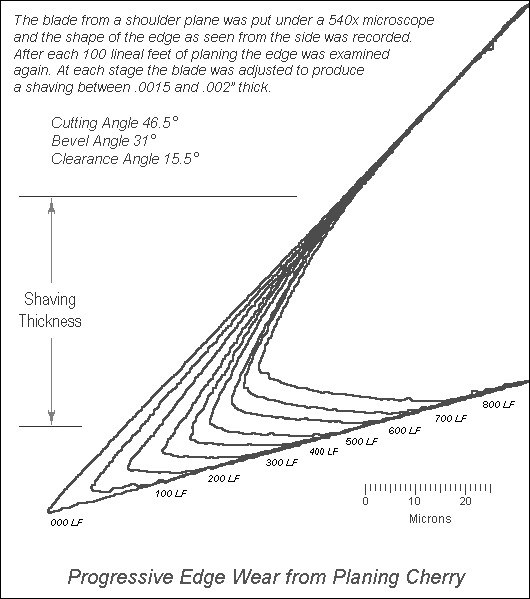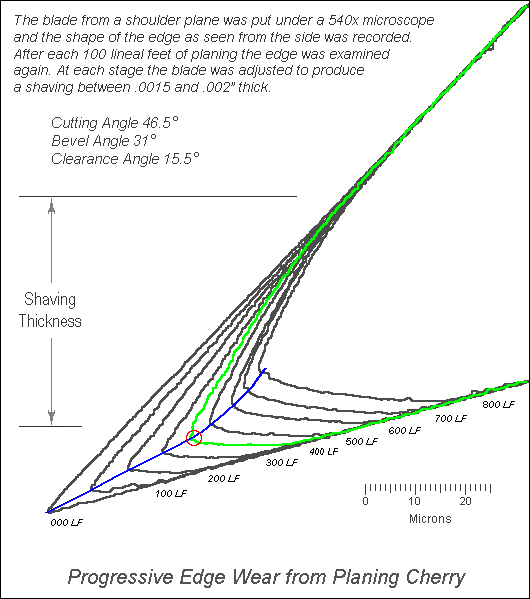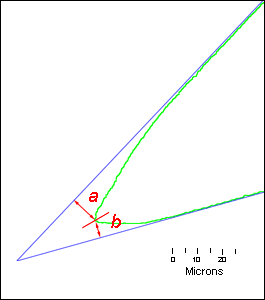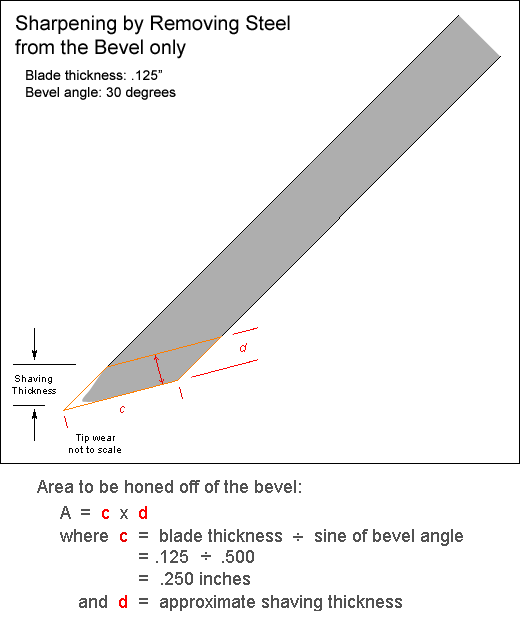Producing a new sharp edge can be done by removing metal from the bevel of the blade, from the back of the blade, or from both. Each way can be useful in certain circumstances.
The bevel only strategy is useful if a large area of the blade back has been flattened and polished. It allows this surface to remain untouched except when the wire edge is removed using the finest abrasive. A little more polishing by the finest abrasive doesn’t degrade the quality of the surface.
Honing only the back of the blade can be useful on profiled blades which would require slipstones or other specially shaped abrasives to recreate the original shape of the bevel. Honing only the back requires the removal of more metal to get the edge sharp but since only flat abrasives are needed this can be the quicker method for this type of blade.
Removing metal from both the bevel and the back usually means putting the blade back on a coarser stone to speed things up. If a very sharp edge is desired the back then needs to be repolished using a fine stone. Whether this repolishing is worth the time and effort each time the blade is sharpened depends on how flat and how polished the result must be. A high polish on an extremely flat surface with no dubbing at the edges is difficult to create in the first place and often unnecessary.
One objection to the bevel-only method is that a great deal of metal must be removed to entirely eliminate the wear surface on the back of the blade. This raises the question of how far up the blade back the wear extends. I’ve done some tests using a shoulder plane to find out what the shape of the wear profile is at different stages of wear. These tests are presented on the page Wear Profiles.
The most pertinent results are summarized in the diagram below.

Several points are significant here:
- The size of the upper wear surface is approximately equal to the thickness of the shaving being taken. In this case it was just under .002 inches.
- The position of the rounded tip of the blade changes as the blade becomes more worn. When the blade is still close to sharp the tip of the blade is close to the lower surface of the blade wedge and that rounded tip continues to climb as the blade becomes more worn. Blades used in power tools end up with a rounded tip just below the upper surface and a large wear surface behind (below) the tip. This stage of extreme wear is not reached on blades used in hand tools.
Calculating the amount of metal removed using the bevel-only strategy compared to the bevel-and-back one depends on where the rounded tip of the blade is relative to the upper and lower surfaces of the blade wedge.
In the diagram below the blue line traces the path of the blade tip as wear increases. The green profile shows the stage of wear where I would resharpen a smoothing plane blade. In the calculations that follow, the tip position shown in the red circle will be used to compare sharpening strategies.


With these dimensions it is possible to compare the amount of steel removed using each sharpening strategy.
The calculations below are for a blade 1/8” thick with a 30 degree bevel angle. The area of the back to be honed is taken to extend 1 inch from the cutting edge.

Using microns for all measurements gives the result that 8,000 square microns of area must be removed.

The shaving thickness in this test was about .002 inches or 50 microns. The area to be removed using this method is about 300,000 square microns.
Clearly the bevel-only method requires the removal of more steel but has the advantage that grinding can be used. Also, a working sharp edge can be produced by removing much less steel from the bevel. Once the rounded tip is honed off the remaining wear surface acts like a shallow back bevel.